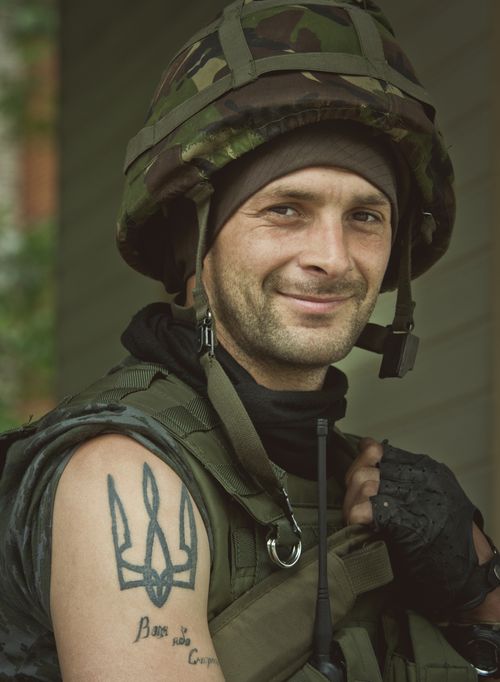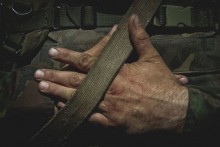The human mind has always found it easier to understand and realize every large-scale phenomenon, event or fact (especially if it was unexpected or threatening) by comparison or conditional identification, approximate analogy with what we are already aware from history, what we have heard and “know” (or just imagine that we know...). Here, however, there is always the risk of a dangerous intellectual trap: something with which we compare the critical events of our time, we often know only as “a third approximation” (at best), it is essentially just a set of common cliches, a digest of isolated facts.
We have a vivid example now. The “hybrid war” of a new type in eastern Ukraine, analogies to which are also spontaneously sought in the past, and not only the past of this country, is often compared to the rebellion in the Vendee (western France) at the end of the 18th century. Is this a legitimate comparison? What these bloody conflicts have in common and what is different? To what extent may we talk about the “Donbas Vendee”? Moreover: what do those who resort to such parallels, in fact, know about the real, historical Vendee (leaving the symbolic meaning of the word aside)? The fact is, when studying the facts about the Vendee revolt, these analogies become truly horrifying...
So, it would be quite appropriate to present briefly the story of the tragedy from 220 years ago. The Vendee Revolt (or Rebellion), or as it is much more accurately called in the French historiography, the Vendee War (la guerre de Vendee), lasted for more than three years, from March 1793 to June of 1796. It claimed the lives of 200,000 people (from both warring camps, of which at least 55 percent were civilians), while another 300,000 lost their homes, possessions, became refugees. To understand what reality stood behind these dry figures, one should multiply the losses by a factor of at least 4.5, and then we will have casualties put on modern scale.
The province of Vendee, covering about 6.5 percent of France’s territory (by the way of comparison, the area is close to that of Ukraine’s Khmelnytsky region) lay in western France adjacent to the Atlantic Ocean. From a geographical point of view, this region can be divided into three parts: forest Vendee (it was precisely it that became the base area of the war), marshes, and plain Vendee (covered in sand dunes). The population there, in the opinion of the French writers of the 17th and 18th centuries (even pre-revolutionary), was “independent,” observed somewhat “wild” customs, and most importantly, had been for centuries brought up in a spirit of loyal obedience to His Majesty the King, the Catholic faith and their local nobles... The Vendee War is precisely that clear and scary example of how dangerous it is when a part of the nation becomes “blocked” in the past, in the archaic historical time (there really are some parallels with the Donbas), and what are the bloody consequences of it.

SOLDIER ARTUR STEPANENKO. JUNE 10, 2014. AT A ROADBLOCK NEAR SLOVIANSK / Photo by Serhii KHARCHENKO
Thus, “the good old order” (God is in heaven, the King at Versailles, the local lord nearby) seemed eternal and immutable to the Vendee peasants. However, with the revolution starting in 1789, the changes were truly tectonic: the King was executed on the guillotine; priests were forced to swear allegiance to the Republic, the non-jurors were deprived of parishes (and sometimes tried by special courts under the Jacobin regime), the nobility’s lands were confiscated according to the Law “On National Property,” and, in theory, ought to be transferred to peasants (but most of them fell into the hands of hungry speculators instead). The Vendee peasants with their archaic worldview found life under the new system impossible. Moreover, the war had a very strong social component: the revolution had failed to implement the expectations of the people of Vendee as well as the French in general, and this is important. Eminent French historian Albert Soboul pointed out that mass revolt began in the Vendee (supported by peasantry, while townsfolk treated it cautiously and waited) in March 1793 to some extent spontaneously (which cannot be said about the war in our east – its planners and preparators are well known!), and the feudal elite was surprised by this armed action before they used it to their advantage.
The external approximate reason, impetus (but only impetus) for the war was the announcement of compulsory total mobilization of the residents of the Vendee into the revolutionary army, made on March 4, 1793. In 10 days, the entire province was on fire. Of course, the nature of the war was much more complicated than the trite textbook formula “clash between revolutionary France and a conspiracy of nobles and priests, supported blindly by ignorant masses.” Similarly to the war in our east, the Vendee rebels (who may be, with some exaggeration, be called “rebels” and “militiamen,” because many of them, unlike venal terrorist scum in the Donbas, really stood for an idea, though obsolete one, as the idea of monarchy was) were helped from outside, receiving weapons and funds (primarily from the British government as well as representatives of the old monarchy, which resembles our situation again, does not it?), which enabled them to hold out for three years against the superior forces of the revolutionary army.
The war continued with varying success. It promoted talented generals: Republicans 26-year-old Lazare Hoche (commander of the Revolutionary army) and Thomas-Alexandre Dumas (the father of future writer); and on the rebels’ side, young aristocrats Henri de la Rochejaquelein (charismatic commander who always led his soldiers from the front, commanding “For the Faith and the King!” and died, aged 23, hit by a stray bullet) and poet warrior Maurice d’Elbee (where the Vendee rebels had aristocrats, the Donbas mercenaries have lumpen proletariat and terrorized locals...).
The war (I would recommend reading the classics: Victor Hugo’s Ninety-Three and Honore de Balzac’s The Chouans) was exceptionally brutal. Both sides had no mercy for anyone! They gave no quarter. Republican general Fran ois Joseph Westermann (Hoche and Dumas’s successor) had finally “cleared” Vendee in June 1796 (after which the hostilities ceased) and reported to the Directory in Paris literally as follows: “There is no more Vendee, Republican citizens. It died beneath our free sword, with its women and its children. Following the orders that you gave me, I crushed the children beneath the horses’ hooves and massacred the women. I do not have a single prisoner to reproach myself with. I have exterminated them all.” It should be emphasized that the rebels and (incidentally, the Russian White movement which respected them) also showed relentless cruelty to the enemy: the poet d’Elbee ordered back in 1794: “All prisoners are to be shot without trial, and better yet, they are not to be taken at all.” He justified this policy by “special circumstances” of the war; his enemies subsequently treated him in this exact manner...
And now, dear reader, on reading this very brief story about the events of the Vendee War (by the way, the rebels never questioned the region’s allegiance to France, and never proclaimed “Nantes” or some other “people’s republic”), you get to make a conclusion yourself on the similarities and differences of the past tragedy and the bloody events of our day in the Donbas. The example is not proof, because every comparison is lacking. Still, it is also instructive. In the opinion of the author of these lines, absolute priority now is to do everything possible and impossible to save the Donbas from turning into another Vendee!







